
Headingley is a suburb of Leeds, West Yorkshire, England, approximately two miles out of the city centre, to the north west along the A660 road. Headingley is the location of the Beckett Park campus of Leeds Beckett University and Headingley Stadium.

Leeds North West is a constituency in the City of Leeds which has been represented in the House of Commons of the UK Parliament since 2017 by Alex Sobel, of Labour Co-op.

Gregory Thomas Mulholland is a Liberal Democrat politician in the United Kingdom who was the MP for Leeds North West.

Headingley Stadium is a stadium complex in Headingley, Leeds, West Yorkshire, England, comprising two separate grounds, Headingley Cricket Ground and Headingley Rugby Stadium, linked by a two-sided stand housing common facilities. The grounds are the respective homes of Yorkshire County Cricket Club and Leeds Rhinos Rugby League Club.

The Otley Run is the name given to a pub crawl in Leeds, West Yorkshire. The popular route covers Far Headingley, Headingley and Hyde Park areas and commonly continues towards Leeds City Centre.
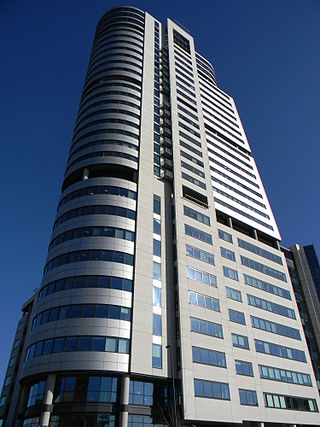
Bridgewater Place, nicknamed The Dalek, is an office and residential skyscraper in Leeds, West Yorkshire, England. It was the tallest building in Yorkshire at the time of being topped out in September 2005, but is now the second-tallest after another Leeds building, Altus House. Bridgewater Place is visible at up to 25 miles from most areas.

Richmond Hill is a district of Leeds, West Yorkshire, England. The district lies a mile to the east of the city centre between York Road, East End Park and Cross Green. The appropriate City of Leeds ward is Burmantofts and Richmond Hill.
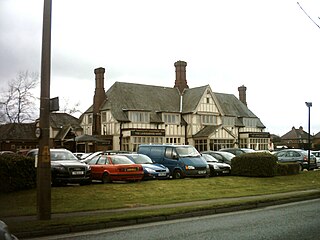
Lawnswood is a small suburb in the north west of the city of Leeds in West Yorkshire, England. As such it is north north east of the West Yorkshire Urban Area. The suburb falls within the Adel and Wharefdale Ward of the City of Leeds Council.

Burley is an inner city area of Leeds, West Yorkshire, England, 1 mile (1.6 km) north-west of Leeds city centre, between the A65 Kirkstall Road at the south and Headingley at the north, in the Kirkstall ward.
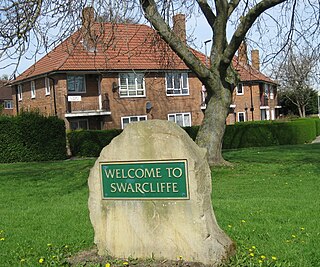
Swarcliffe, originally the Swarcliffe Estate, is a district of Leeds, West Yorkshire, England. It is 4.9 miles (8 km) east of Leeds city centre, and within the LS14 and LS15 Leeds postcode area. The district falls within the Cross Gates and Whinmoor ward of the Leeds Metropolitan Council.
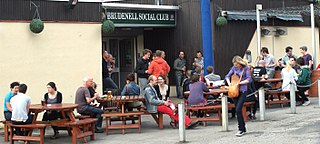
The Brudenell Social Club is a live music venue and social club in Hyde Park, Leeds, England. While being a social enterprise, it retains the "community atmosphere of its origins as a working men's club". The club is split into three areas—a 400 capacity concert room, a bar area and games room section and a second 400 capacity concert area, known as the Community Room, which opened in 2017.

Craig Huby is an English rugby league footballer. He has previously played as a prop for Wakefield Trinity and the Huddersfield Giants in the Super League, and spent 11 years with the Castleford Tigers, playing in the Super League and the second tier of English rugby league.
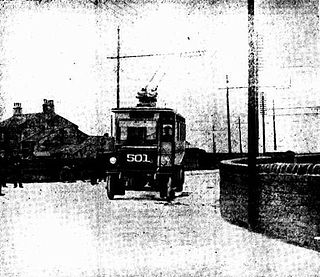
The Leeds trolleybus system served the West Riding of Yorkshire city of Leeds in England between 1911 and 1928. In May 2016, plans to construct a new system, the New Generation Transport (NGT) project, were refused approval from the UK Department for Transport, following a negative report from the planning inquiry.

The architecture of Leeds, a city and metropolitan borough in West Yorkshire, England, encompasses a wide range of architectural styles and notable buildings. As with most northern industrial centres, much of Leeds' prominent architecture is of the Victorian era. However, the City of Leeds also contains buildings from as early as the Middle Ages such as Kirkstall Abbey, one of Britain's best preserved ruined Cistercian monasteries, as well as examples of 20th century industrial architecture, particularly in the districts of Hunslet and Holbeck.

The Hyde Park Picture House is a cinema and Grade II listed building in the Hyde Park area of Leeds, West Yorkshire, England. Built by Thomas Winn & Sons, it opened on 7 November 1914. It features many original features, such as an ornate balcony and external box office, and is the only remaining gaslit cinema in the United Kingdom. Following the installation of "comfier seating", the Picture House has a capacity of 275, down from around 587 on opening.

Chapel Allerton is an inner suburb of north-east Leeds, West Yorkshire, England, 2 miles (3.2 km) from the city centre.

The Majestic is a Grade II listed building on City Square, Leeds, occupying the corner of Quebec Street and Wellington Street.

The Golden Beam is a pub and Grade II listed building located in the Headingley area of Leeds, West Yorkshire, England. It was built in c. 1912 for the Church of Christ, Scientist, and was known as the Elinor Lupton Centre from 1986 to 2010 when it was a school arts centre. It was designed by Piet de Jong and William Peel Schofield from the architectural firm Schofield and Berry. Constructed in white Portland stone in a mixed style of Egyptian Revival and Art Deco, it was originally built as a Sunday school in c. 1912–1914, extended in the 1930s with a church building and then used by the Leeds Girls' High School as a theatre and music centre from 1986 until 2010. The structure has architectural significance in the locality due to its distinct style and use of materials; many original features and fittings survive, including the entrance foyer, two staircases and a glazed lantern in the auditorium roof.





















